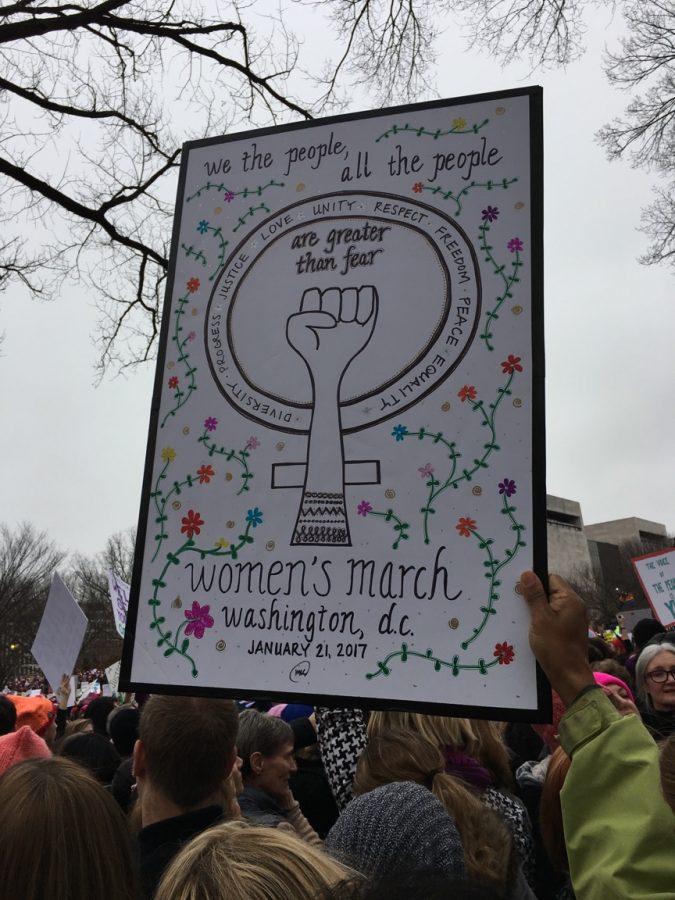Women March on Washington… and Worldwide
January 30, 2017
I deliberated with my friends about what time we should arrive at Penn Station on the morning of Saturday, January 21st. Would 8 AM be too early, we wondered? What about 7:30? Or did we even dare arrive at… 7? After much consideration, we planned to arrive at 7:15. After all, this would give us enough time to get MARC train tickets and arrive in Washington, D.C. before too many crowds had gathered… or so we thought.
In fact, the reality of the situation was drastically different. Hundreds of people gathered in the lobby of Penn Station to buy tickets to D.C. while a line spanning five city blocks snaked around the building. These people all had the sole purpose of making it into the city for the Women’s March on Washington, and they were willing to wait for it.
Finally, after a two-and-a-half hour wait and an hour on a train with standing room only, we were ready to stand on the Washington Mall. Thousands of women, men, and children milled around us with countless signs, addressing issues that ranged from wage inequality to the lack of female representation in government. We pushed through the crowd to make it towards the speakers’ podium, but after a certain point, the crowd was too dense to move at all. In the end, we settled on standing in the middle of the street, where at least a corner of the jumbotron was visible.
Even though I couldn’t really see or hear the speakers, my experience at the Women’s March was remarkable. Just a few feet from where I stood, demonstrators were climbing on top of trees and traffic lights to lead cheers about women’s rights and democracy. In addition, marchers from around the world introduced themselves and shared stories about why they had come so far for the demonstration. I met people from as far as Texas, Massachusetts, and London. Still, no matter whom I asked, everyone had the same answer about why they were there: they wanted to defend equal rights for women… not only in America, but also worldwide.
Given this overwhelming call for global feminism, it is no surprise that Washington, D.C. was not where the marches stopped. Early crowd size estimations show that about 750,000 marched in Los Angeles, 250,000 in New York City, 100,000 in London, and 60,000 in Toronto. Additionally, smaller marches were held in cities such as Nashville, Albuquerque, and Austin.
Overall, this march was not an isolated event, but rather a cry for women’s rights that was heard across the country and world. Looking into the future, it is likely that this large-scale demonstration will have a definite effect on many countries’ political and social landscapes. Now that these marches have come and gone, one question remains: what comes next?



Sarah Myers • Feb 5, 2017 at 8:13 pm
Good coverage. I continue to be surprised that so many people think that women – and those who accompanied them – were whining, or were protesting the election. Thank you for going to D.C. Thank you for helping to transform the world! Sra.